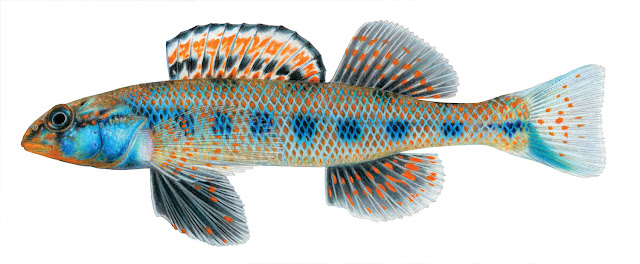T’was time for the holidays in
the state of Tennessee
And everyone at TNACI was happy
as can be.
We’re ready for some fun, some
food, and maybe snow
And to feature some fishes we
love and we know.
If you tend to celebrate the
Christian way
And have your winter holiday on
Christmas Day,
Then maybe you’ll find a new
friend and ally
In a very special fish, Etheostoma hopkinsi.
 |
| Christmas Darter (E. hopkinsi) photo by Dustin Smith |
And if Santa visits your house, tell your kids to be good
Cuz they’ll want some sweets, that’s well understood.
So show them an image of some aquatic fun
With E. osburni and E. neopterum.
 |
Candy Darter (E. osburni) Photo by Cory Dunn
|
 |
| Lollipop Darter (E. neopturum) illustration by Joe Tomelleri |
But if you’ve been bad, you know what will be
In your stocking that day or
under the tree.
There’ll be no sweets, no
presents, nada,
Except maybe E. cinereum or Percina brevicauda.
 |
| Ashy Darter (E. cinereum) illustration by Joe Tomelleri. |
We hope that you laughed due to
this little ditty.
I really can’t lie, fish humor
makes us giddy.
Instead of singing carols to you,
with flutes and a drum,
We will just say have a Happy Etheostoma brevirostrum.
 |
| Holiday Darter (E. brevirostrum) illustration by Joe Tomelleri. |
































